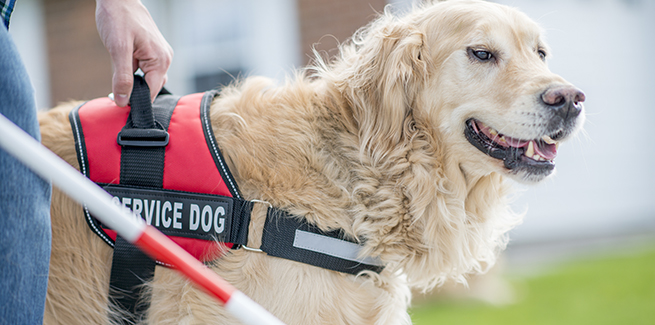In the vibrant world of pet ownership, dog backpacks have evolved beyond mere accessories, serving as both functional tools and a means for our canine companions to contribute meaningfully to the pack. These specially designed backpacks not only add practicality to your dog’s daily routine but also address their innate desire to be active contributors within the family unit. This article delves into the multifaceted roles of dog backpacks and how they provide a fulfilling job for dogs, allowing them to participate actively in the pack.

Dog Jobs
In the past, dogs served as invaluable partners in various working roles, including herding livestock on farms. Their keen sense of smell and tracking abilities made them essential in hunting expeditions, aiding humans in securing food. Dogs were employed as guard animals, protecting homes and properties from potential threats. In times of war, they played crucial roles as messenger dogs, delivering important communications across challenging terrains. In modern times, dogs have transitioned into diverse roles, such as guide dogs for individuals with visual impairments, therapy dogs offering emotional support, and search and rescue dogs aiding in disaster-stricken areas, showcasing their adaptability and unwavering dedication to human needs. Dogs love to work.
But the sad truth is that the majority of dogs are currently unemployed…
Dog backpack is a way to Contribute
Dogs are social animals with a deep-rooted instinct to contribute to their pack. In a domestic setting, however, most dogs often find themselves without a specific task or role, leading to unexpressed energy and potential boredom. Dog backpacks come to the rescue by offering a purposeful way for dogs to channel their energy and contribute meaningfully to the pack dynamic.
Practical Uses Reinforcing Canine Contribution:
Weight Distribution and Purposeful Load:
The concept of carrying a backpack is inherently satisfying for dogs, as it provides them with a designated task. By distributing a balanced load within the backpack, dogs not only burn excess energy but also feel a sense of purpose, contributing actively to the family unit during walks.
Mental Stimulation and Problem-Solving:
Dog backpacks, with their added weight and compartments, engage a dog’s mind in problem-solving. This mental stimulation is not only a form of exercise for their cognitive abilities but also fulfills their desire to contribute by actively participating in the training and walking routine.
Pack Bonding Through Shared Responsibilities:
Dogs thrive on routines and shared responsibilities within their pack. By incorporating a backpack into their routine, dogs become an integral part of the family’s activities, fostering a stronger bond between humans and their canine companions.
Assisting with Daily Chores:
Some dogs, especially those with specific training, can be taught to carry items like water bottles or small essentials in their backpacks. This not only eases the load for the owner but also instills a sense of responsibility and contribution in the dog.
Addressing Boredom and Restlessness:
Dogs often exhibit destructive behavior when bored or restless. Providing them with a backpack and a job to do redirects their energy constructively, reducing the likelihood of destructive behaviors and promoting a sense of accomplishment.
In essence, dog backpacks serve as more than just accessories; they are tools that tap into a dog’s intrinsic need to contribute to their pack. By offering a fulfilling job through weight distribution, mental stimulation, and shared responsibilities, these backpacks empower dogs to actively participate in the family dynamic. As responsible pet owners, recognizing and addressing our furry friends’ desire to contribute not only enhances their overall well-being but also strengthens the bond between humans and their canine companions. So, the next time you embark on a walk, consider the transformative power of a dog backpack — not just as a practical accessory but as a means for your four-legged friend to actively contribute and thrive within the pack.
Check it out:

